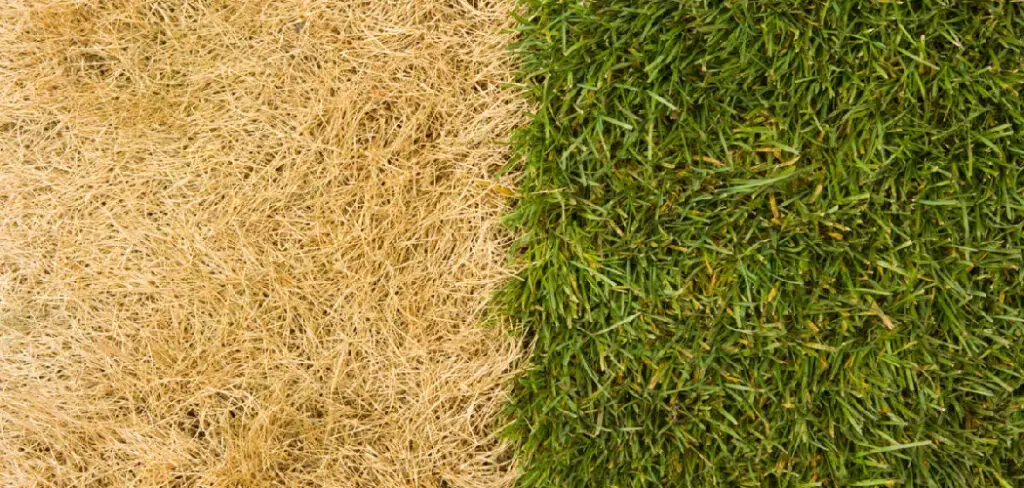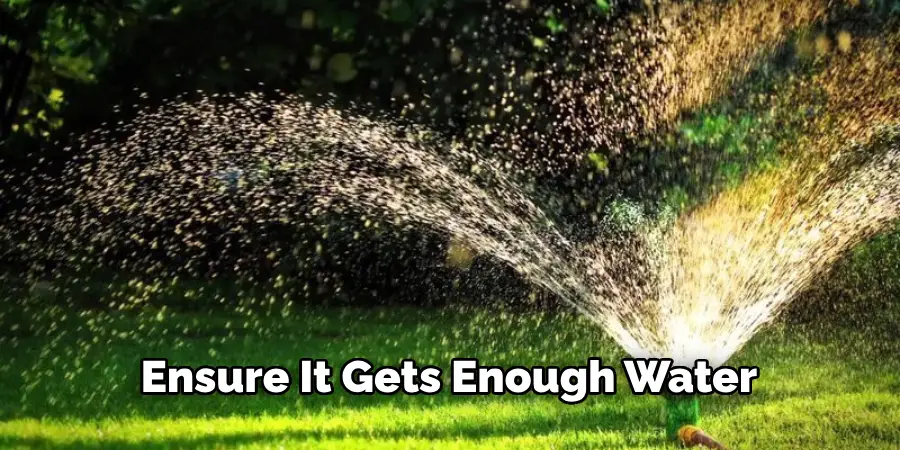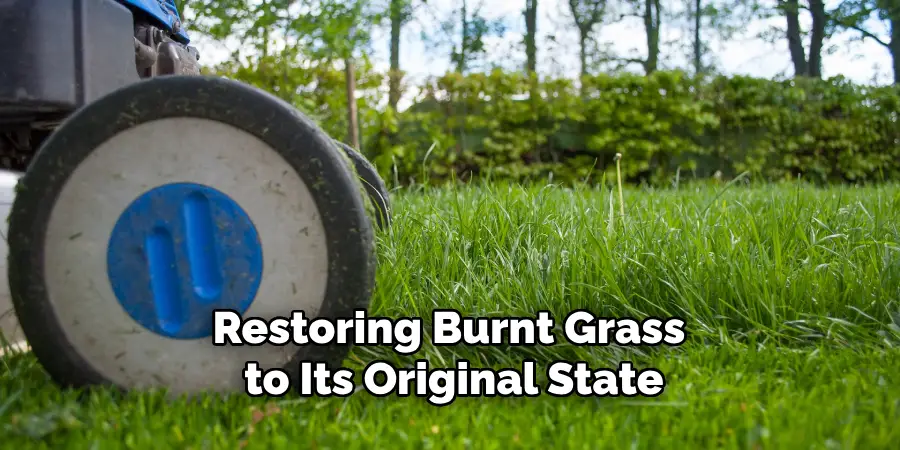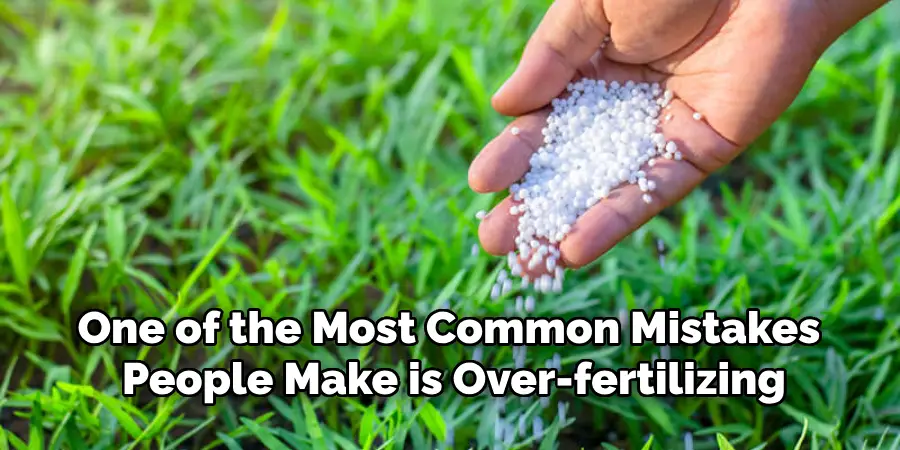A Green Lawn is a Beautiful Sight to See, but Everyday Life and the Elements Can Take a Toll on Your Lawn, Leaving It Looking Burnt and Unsightly. Burnt Grass is a Common Lawn Problem; Whether It’s Caused by Extreme Heat, Drought, or Over-fertilization, It Can Be Frustrating.
However, Do Not Fret; There Are Ways to Bring Burnt Grass Back to Life. In This Blog Post, We Will Cover Some Tips and Tricks on How to Make Burnt Grass Green Again and Bring Your Lawn Back to Life.

Can You Make Burnt Grass Green Again?
Picture this: a blanket of brown, charred grass covering your once luscious lawn. It’s a common sight for those who have accidentally burned their grass with fertilizers or other chemical treatments. But fear not, for there is hope yet. While it may seem impossible to bring life back to those unsightly patches, you can try a few methods to turn burnt grass green again.
From over seeding and proper watering techniques to the use of specific lawn treatments, with a little patience and dedication, your lawn can flourish once again. So don’t fret over those brown spots for too long; take action and watch your grass come back to life.
Why Should You Make Burnt Grass Green Again?
If you’ve ever had an unfortunate accident involving a fire on your lawn, then you know the unsightly and discolored aftermath that it can leave behind. Burnt grass has a distinct appearance that sets it apart from the rest of your beautifully green lawn and can quickly take away from the look of your outdoor space. However, with a little care and attention, you can transform that unsightly brown patch into a lush, green oasis again.
Not only will it improve the aesthetic of your yard, but it will also prevent further damage to your lawn and be safer for your pets and family to enjoy. So don’t let burnt grass become a permanent fixture on your lawn – take action and revive it back to its former glory!
How to Make Burnt Grass Green Again: Tips and Tricks for a Lush Lawn
1. Watering Routine
The first step to making burnt grass green again is to ensure it gets enough water. Water is crucial for any plant to grow as it helps with photosynthesis. Burnt grass is usually the result of a lack of water, so by watering it regularly, you can restore moisture levels and promote healthy root growth.
However, it’s essential to establish a proper watering routine so you do not over or under-water your lawn. Experts recommend watering your lawn early in the morning or late in the evening, and you should aim to water the grass for about 1 inch per week.

2. Apply Fertilizer
Burnt grass can be due to a lack of nutrients, particularly nitrogen. By applying a nitrogen-rich fertilizer, you can restore nutrients to the soil and promote healthy growth. Be sure to read the instructions on the fertilizer bag, as too much fertilizer can cause more harm than good. Experts recommend applying fertilizer during the early morning or late evening hours to avoid burning the grass further.
3. Grass Seed
If a significant portion of your lawn is burnt and does not seem to respond to water and fertilizer, you may need to consider overseeding. Overseeding involves spreading grass seed over your existing lawn to help promote new growth. Be sure to choose a grass seed that will thrive under your specific weather and soil conditions. You should look for seeds with a high germination rate and a blend of grasses that are tolerant of heat and drought conditions.
4. Aerate Your Lawn
Aeration is the process of creating small holes in the soil, which helps to improve the flow of water, air, and nutrients to the roots of your lawn. Aeration can benefit lawns damaged by drought, excessive foot traffic, or compacted soil. You can do this with a specialized tool known as an aerator or by simply using a garden fork to make small holes in the soil.

5. Maintain Your Lawn
To keep your lawn looking lush and green, you need to maintain it. This includes regular watering and fertilizing and things such as mowing, weeding, and edging. You should aim to mow your lawn regularly, but be sure not to cut it too short, as this can cause further damage. Remove any weeds, as they can compete with your grass for nutrients and water. Edging along sidewalks and driveways can also help keep your lawn neat and tidy.
6. Shade Your Lawn
If your lawn is located in an area that receives a lot of direct sunlight, it may be helpful to provide shade during the hottest parts of the day. This could involve planting trees or installing awnings or umbrellas. Providing shade will help prevent your lawn from getting too hot and drying out, contributing to burnt grass.
7. Monitor Weather Conditions
Lastly, monitoring weather conditions and adjusting your lawn care routine is essential. If there is a drought, you may need to increase the watering frequency or provide additional shade. During cooler months, you may not need to water as often.
By staying aware of weather conditions, you can make necessary adjustments to keep your lawn looking green and healthy.
By following these tips, you can make burnt grass green again and restore your lawn’s lush, vibrant look. Remember to always be mindful of weather conditions and establish a routine for watering and maintenance. With proper care, your lawn will thrive and be the envy of your neighborhood. So why wait? Start implementing these tips today and watch your burnt grass transform into a green, healthy oasis.
5 Benefits of Making Burnt Grass Green Again
1. Improved Air Quality
Making burnt grass green again can have a significant impact on air quality. Burning grass releases harmful atmospheric pollutants, such as carbon dioxide and nitrogen oxides, leading to increased smog levels and other air-related health problems. By restoring burnt grass to its original state, these pollutants can be reduced, improving air quality in the surrounding area.

2. Reduced Soil Erosion
Making burnt grass green again can also help reduce soil erosion. When grass is burned, it leaves bare patches of soil vulnerable to wind and water erosion. By restoring the grass to its original state, these bare patches of soil will be covered up, thus reducing the amount of soil that is lost due to erosion.
3. Increased Biodiversity
Making burnt grass green again can also help increase biodiversity in an area. Burning grass destroys habitats for many species of plants and animals, leading to decreased biodiversity in an area over time. Restoring the grass to its original state will restore habitats for many species, leading to an increase in biodiversity over time.
4. Improved Water Quality
Making burnt grass green again can also help improve water quality in an area by reducing runoff from bare patches of soil caused by burning the grass. Runoff from these bare patches often contains pollutants such as fertilizers and pesticides that can contaminate nearby bodies of water if not properly managed or contained. By restoring the burnt grass back to its original state, these pollutants will be less likely to enter nearby bodies of water and contaminate them with harmful chemicals and toxins.
5. Reduced Fire Risk
Finally, making burnt grass green again can help reduce fire risk in an area by providing a natural firebreak between areas prone to wildfires or other types of fires that could spread quickly through dry vegetation or dead trees. Restoring the burnt grass back to its original state helps create a barrier between areas prone to fires that could slow down their spread if they were ever ignited.
Some Common Mistakes People Make When Trying to Make Burnt Grass Green Again
When your grass is looking a little brown and lifeless, it’s understandable that you want to do whatever it takes to revive it. However, sometimes, our efforts to bring back the green can actually cause more harm than good. One of the most common mistakes people make is over-fertilizing.
While it’s true that your grass needs nutrients to grow, too much fertilizer can burn the roots and make the problem worse. Another mistake is not watering enough.

Although you may be hesitant to water too much, a lack of moisture can stress your grass and cause it to turn brown or die off. Finally, some people make the mistake of cutting their grass too short, leaving it vulnerable to pests and disease. By avoiding these common pitfalls and properly caring for your grass, you can get it looking green and healthy once again.
Conclusion
A healthy lawn is a beautiful sight to see, and by following these tips and tricks, you can bring your burnt grass back to life. While it may take some time, effort, and patience, the end result will be worth it. We hope this guide has been helpful and you are well on your way to a lush, green lawn.
Remember to be consistent with watering, fertilizing, overseeding, aerating, and lawn maintenance; soon enough, your burnt grass will be a distant memory. Thanks for reading our post about how to make burnt grass green again.
About
Outdoor Fixes is a distinguished figure in the world of Diy design, with a decade of expertise creating innovative and sustainable Diy solutions.
His professional focus lies in merging traditional craftsmanship with modern manufacturing techniques,
fostering designs that are both practical and environmentally conscious. As the author of diy,
outdoorfixes delves into the art and science of outdoorfixes-making, inspiring artisans and industry professionals alike.
Education RMIT University
(Melbourne, Australia) Associate Degree in Design (Outdoor Fixes) Focus on sustainable design, industry-driven projects,
and practical craftsmanship. Gained hands-on experience with traditional and digital manufacturing tools, such as CAD and CNC software.
Nottingham Trent University
(United Kingdom) Bachelor’s in outdoorfixes.com and Product Design (Honors) Specialized in product design with a focus on blending creativity with production
techniques. Participated in industry projects, working with companies like John Lewis and Vitsoe to gain real-world insights.
Publications and Impact
In diy, Outdoor Fixes his insights on indoor design processes, materials, and strategies for efficient production.
His writing bridges the gap between artisan knowledge and modern industry needs, making it a must-read for both budding designers and seasoned professionals.

